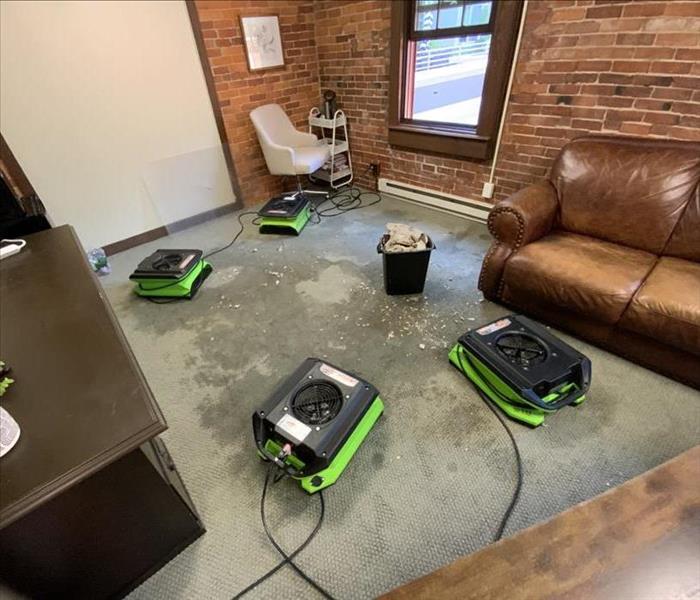To Tear or to Dry: Making the Right Call for Your Carpet with SERVPRO
7/15/2024 (Permalink)
Carpeting adds warmth and comfort to any space, but when water damage strikes, it can quickly become a battleground between restoration and replacement. Knowing when to tear up a carpet and when it can be salvaged with drying equipment is crucial for maintaining your home's comfort and aesthetic. Here’s a thoughtful guide from SERVPRO® to help you make the best decision:
Assessing the Extent of Water Damage
The first step in determining the fate of your carpet is to assess the extent of water damage. Water damage can be categorized into three levels:
- Category 1: Clean water from sources like broken pipes or sink overflows.
- Category 2: Contaminated water with some level of chemicals or pollutants (e.g., dishwasher overflow).
- Category 3: Highly contaminated water (e.g., sewage backup).
For Category 1 water damage, where the water is clean and the damage is minimal, drying the carpet with professional equipment is often feasible. SERVPRO uses specialized extraction tools, air movers, and dehumidifiers to thoroughly dry the carpet and underlying padding, preventing mold growth and structural damage.
Considering Contamination and Health Risks
If the water damage involves Category 2 or Category 3 water (contaminated or sewage water), tearing up the carpet is usually recommended. Contaminated water can introduce harmful bacteria, viruses, and other pathogens into the carpet fibers and padding, posing health risks to occupants. In such cases, prompt removal and disposal of the carpet and padding are essential to ensure a safe and sanitary living environment.
Assessing Structural Damage and Saturation Levels
Even with Category 1 water damage, certain factors may warrant carpet removal:
- Saturation Level: If the carpet and padding are saturated beyond a certain point, drying equipment alone may not be sufficient to restore them fully. SERVPRO technicians use moisture meters and infrared cameras to assess moisture levels in carpets and underlying materials, guiding the decision-making process.
- Structural Damage: Water damage can compromise the structural integrity of flooring materials, including subfloors and baseboards. If there are signs of structural damage or if moisture has seeped into these materials, removing the carpet may be necessary to prevent further damage and ensure thorough drying of the affected area.
Odor Control and Aesthetic Considerations
Even if drying equipment successfully removes moisture from the carpet, lingering odors from water damage can be challenging to eliminate. SERVPRO employs specialized techniques for odor control, but if odors persist despite drying efforts, replacing the carpet may be the most effective solution for restoring indoor air quality and maintaining the aesthetic appeal of your home.
Consulting with SERVPRO Professionals
Ultimately, the decision to tear up or dry a carpet should be made in consultation with SERVPRO professionals who have the expertise and tools to assess the situation accurately. Our team provides comprehensive water damage assessment, customized restoration plans, and transparent guidance to help homeowners make informed decisions about their carpets and overall property restoration.
Conclusion: Trust SERVPRO for Expert Guidance
In conclusion, whether to tear up or dry a carpet depends on factors such as the extent of water damage, contamination level, structural integrity, and aesthetic considerations. SERVPRO's prompt response, advanced equipment, and expertise ensure that your home receives the best possible care during water damage restoration. Trust SERVPRO to guide you through the process with professionalism, transparency, and a commitment to restoring your home to its pre-damage condition.






 24/7 Emergency Service
24/7 Emergency Service
